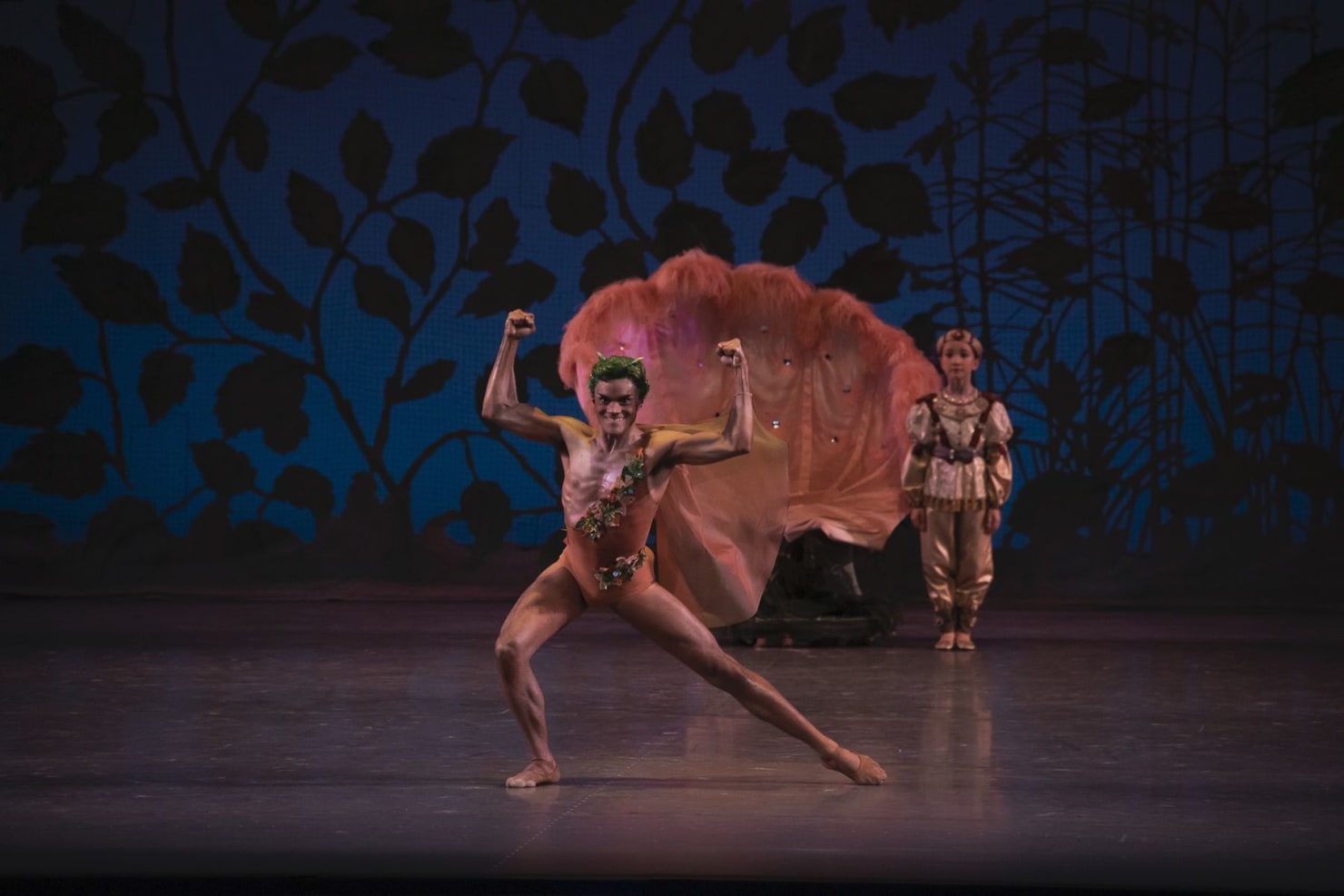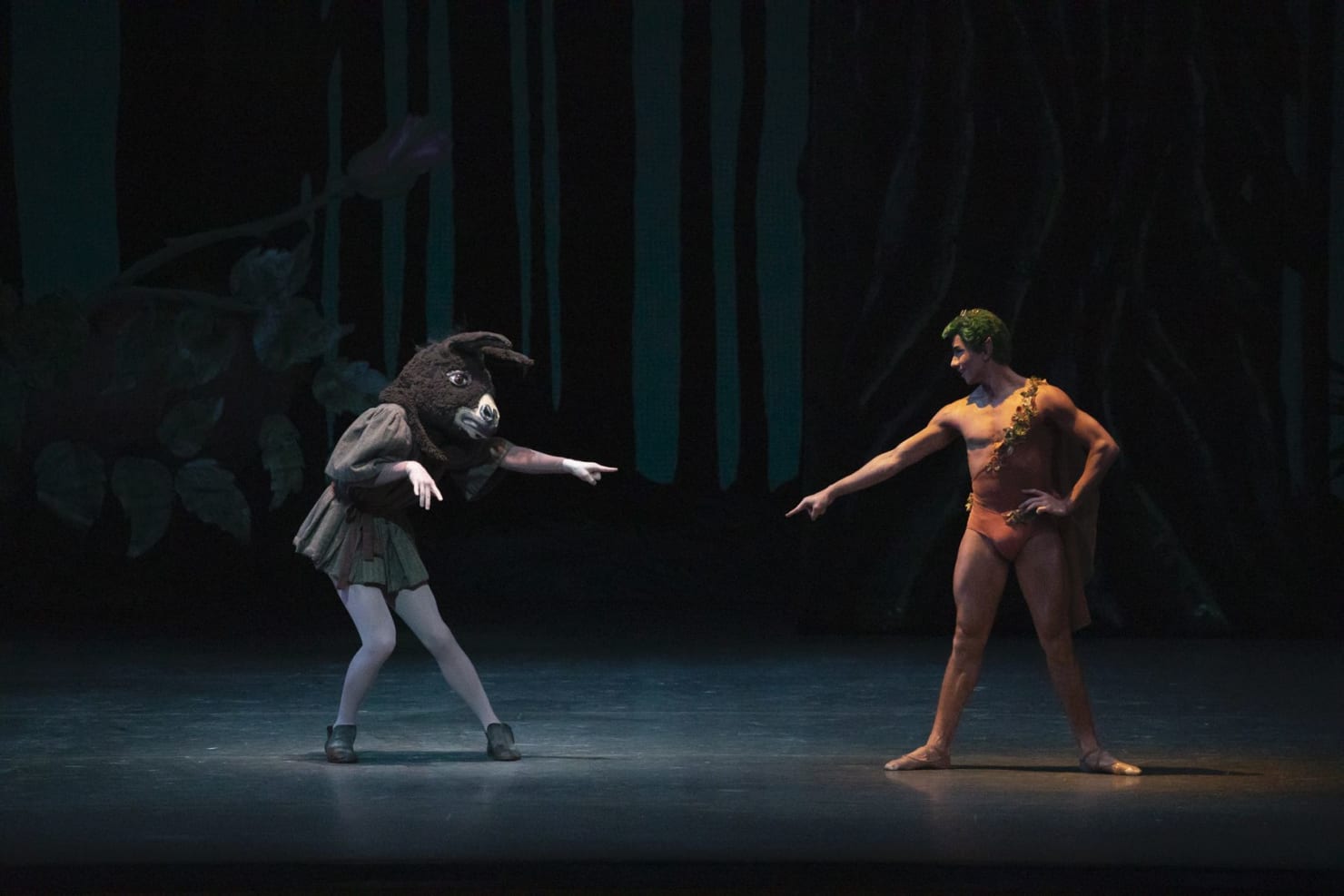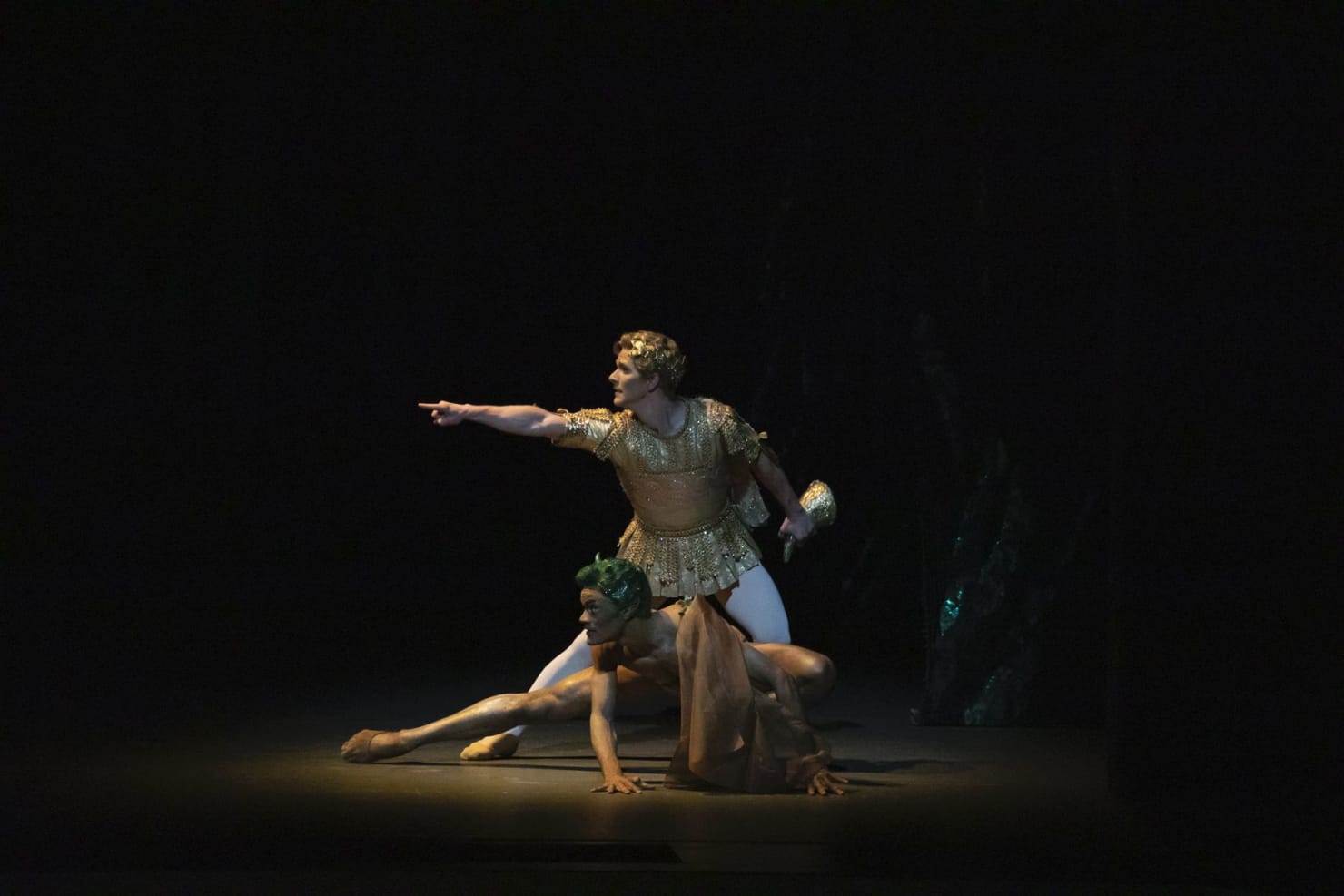
Balanchine’s Witty Choreography
Magical Movement: A Midsummer Night’s Dream
, May 20, 2019
Since the 18th century, Shakespeare’s plays have found new life on the stage as choreographers have translated the bard’s keen ear for dialogue into dramatic ballets.
But no adaptation feels quite so bewitching as George Balanchine’s A Midsummer Night's Dream. Taking its most famous adage to heart, “The course of true love never did run smooth,” Midsummer dissolves the boundaries between fantasy and reality over one evening, turning three couple’s worlds upside down. Fairy King Oberon and his impish sidekick Puck delight in toying with Fairy Queen Titania at the expense of two mortal couples: Lysander and Hermia, and Demetrius and Helena.
But Balanchine’s ballet wasn’t a tried-and-true interpretation. “Some have complained that it’s not Shakespeare, but I never intended it to be,” he once explained. “I think it can be said that the ballet was inspired by [Mendelssohn’s] score.” The resulting musical amalgamation brought together Mendelssohn’s overture and incidental music from A Midsummer Night’s Dream, composed in 1826 and 1843, respectively, as well as additional works from the composer’s repertoire. Darting and dashing at turns, sweeping and soft at others, the score helped construct a ballet as comedic as it was romantic.
As an art form, ballet typically values fluidity and form, which made capturing the inherent comedy that keeps the action of the first act churning no small feat. When Balanchine’s first entirely original evening-length ballet debuted in 1962, he showcased the play’s magic and mischief through an array of witty choreography.
Take Puck, for instance. From the moment he bounds on stage with what has come to be known as a “Puck jump,” Midsummer set the tone for a different kind of balletic phrasing. Soloist Troy Schumacher, who has performed the role of Puck for New York City Ballet, explains, “The first time you come out, you actually just sprint across the stage. You’re basically going non-stop. I once counted and there’s something like 17 entrances.”
As the narrative’s “merry wanderer of the night,” Puck’s choreography reflects his penchant for chaos. “There’s a lot of comedy that Puck directly is in charge of, and there’s a lot of comedy that Puck has to be setting up,” Schumacher says. Timing, ever important in ballet, takes on new meaning for the character. “For this role, because it’s not ballet steps, there is really specific timing about what you have to do and how you have to achieve that,” Schumacher says.
What makes Puck such fun is the way eachdancer has chosen to approach him. Arthur Mitchell originated the role when the ballet opened NYCB’s 1962 Season, but subsequent interpretations have stretched that first interpretation. “You can play Puck a little bit mischievous, you can play him with a touch of evil, you can play him as just a very aloof character, or you can play him as someone who’s not intelligent,” explains Schumacher. “There’s many different ways to explore this character, but at the same time you have to be true to the intention of the choreography.”
Beyond Puck, Balanchine also infused the first act’s pas de deux with humor. Such partnering typically showcases an overarching emotion radiating between the two central figures, and he had fun with that idea when choreographing an exchange between star-crossed lovers Demetrius and Helena, and later between the Fairy Queen Titania and her beastly paramour Bottom. With the former, they push and pull at one another, the intimacy of a pas de deux devolving into jest. With the latter, their pas de deux becomes one of misplaced desire — Titania for Bottom, and Bottom for a sprig of grass he’d like to eat.
When Balanchine began choreographing the play’s narrative acrobatics, he left many a moment for his signature romantic phrasing. But it’s the ballet’s comical moments that make it such a bewitching treat among his renowned repertory — a staging as magnetic as it is magical.






